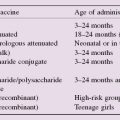Parasitic worms of all three classes (roundworms, tapeworms and flukes) are responsible for numerous human diseases, including three of the most unpleasant (upper left): onchocerciasis, elephantiasis and schistosomiasis. These worms are transmitted with the aid of specific insect or snail vectors, and are restricted to the tropics, while the remainder (lower left) can be picked up anywhere by eating food contaminated with their eggs, larvae or cysts. A feature of many worm infections is their complex life cycles and circuitous migratory patterns, during which they often take up residence in a particular organ (see figure).
Another striking feature is the predominance of eosinophils and of IgE; as a result, hypersensitivity reactions in skin, lung, etc. are common, but whether they are ever protective is still controversial. As they do not replicate in the human host (unlike protozoa, bacteria and viruses), individual worms must resist the immune response particularly well in order to survive and, as with the best-adapted protozoa (compare malaria), immunity operates, if at all, to keep down the numbers of worms rather than to eliminate them. The outlook for vaccination might seem very dim, but it is surprisingly effective in certain dog and cattle infections.
Mystifying, but provocative, is the finding that several drugs originally used against worms (niridazole, levamisole, hetrazan) turn out to have suppressive or stimulatory effects on T cells, inflammation and other immunological elements, bringing out the point that worms are highly developed animals and share many structures and pathways with their hosts. Some very effective drugs against worms act against their nervous system.
Eosinophils
may have three effects in worm infections: phagocytosis of the copious antigen–antibody complexes, modulation of hypersensitivity by inactivation of mediators and (in vitro at least) killing of certain worms with the aid of IgG antibody. Eosinophilia is partly due to mast-cell and T-cell chemotactic factors; T cells may also stimulate output from the bone marrow via cytokines such as IL-5.
IgE
Stay updated, free articles. Join our Telegram channel

Full access? Get Clinical Tree




